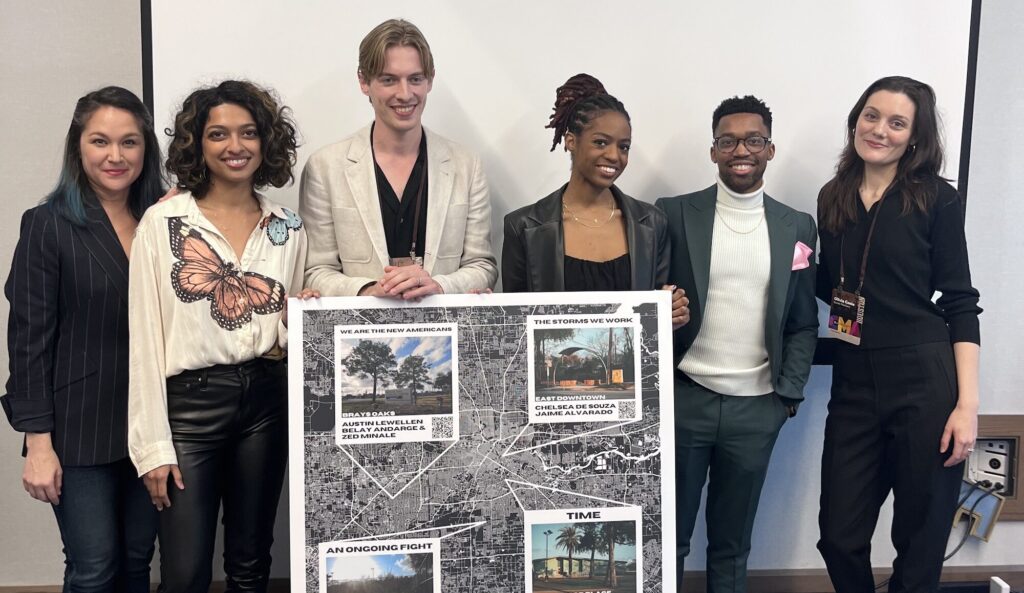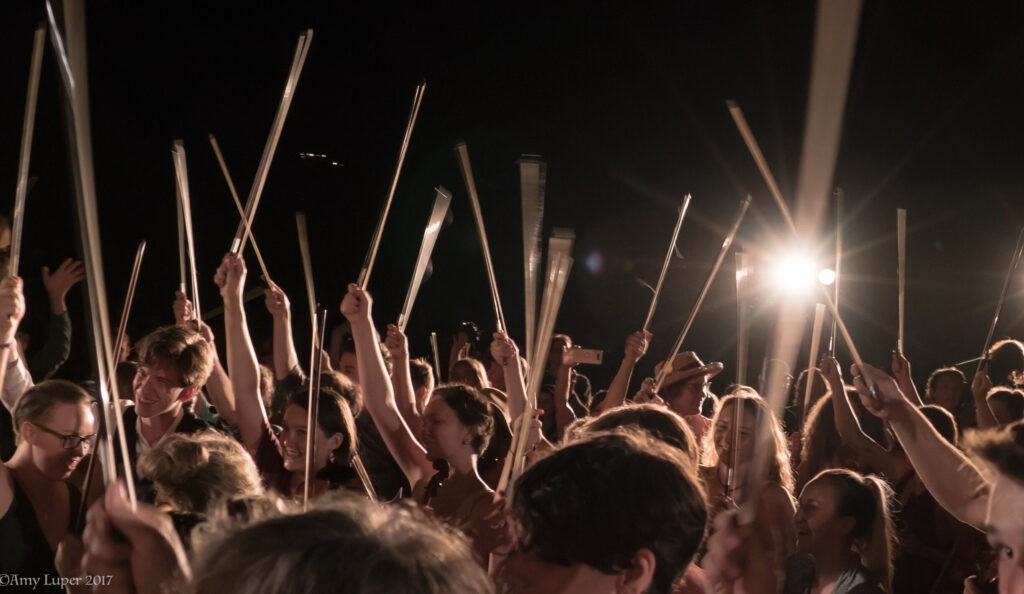End Note: The Game Within the Game

The idea of a Video Game Music (VGM) jam session entered my life six years ago, when saxo- phonist Patrick Bartley told me about a monthly event he was hosting at a café on Manhattan’s Lower East Side called Black Cat LES. It was a super-hip scene. Like any jazz jam, the house band would work through songs and then open it up to anyone who brought their horn. But the Black Cat house band, usually led by Pat, played a version of jazz drawn from VGM, the soundtracks to video games. They even had their own Real Book, just like the one filled with standards that is a Bible for gigging musicians, but filled with only VGM compositions.
Musicians of all disciplines understand the importance of passing down traditions, both academically and aurally, and very often pop culture acts as a vehicle for this transmission. In the middle of the 20th century, jazz musicians often arranged and recorded themes from Broadway shows and popular movies. Many of these songs—“My Favorite Things” from the Broadway musical The Sound of Music (1959), for instance, and “Someday My Prince Will Come” from the Disney film Snow White and the Seven Dwarves (1937)— are now considered standards of jazz repertoire. Much like our predecessors, we use video game songs—modern standards (for our community, anyway)— to pass on the spirit of our musical tradition to a younger crowd.
As a jazz musician who grew up gaming, I was deeply moved when I heard Patrick and his band solo over “Lost Woods” from the game Legend of Zelda: Ocarina of Time (1998), playing bebop and other jazz vocabulary atop the song’s familiar chord changes. In fact, much of the VGM canon uses song forms and harmonies found in jazz repertoire. The second half of “Lost Woods” is a series of 1-6-2-5 chord progressions— exactly like the A section of “I Got Rhythm,” a George Gershwin song from the 1930 musical Girl Crazy that went on to form the template for much of the bebop canon.
Another time at Black Cat we played some of Pat’s arrangements from Chrono Trigger (1995), which I spent hundreds of hours playing as a kid. That game is about time travel; it requires the player to board a time machine and then travel across several eras in order to
prevent an impending calamity. Its music reflects that concept through recurring themes that get re-orchestrated for each era. The other musicians in the house band were also Chrono Trigger fans. Nerding out together on both the game and its music helped us bond. It made the performance tighter and better.
Those Black Cat VGM jams ended during the COVID-19 pandemic, but we had many transformative musical experiences during its short run. Once venues reopened in late 2021, a few of us decided to restart these sessions. That urge sparked VGM Jam Sessions NYC—a grassroots community that partners with New York City venues to cultivate an environment for people from all walks of life to express their love for music, video games, and the intersection of the two. Our overarching goal is to raise musical awareness, interest, and practice by way of video games; our concerts and jam sessions foster collaboration between professional artists, hobbyists, and video game lovers. The musicians at our monthly jam sessions range from students and educators to Grammy-winning musicians. Studies have shown that nearly half the world’s population identify as current or former gamers, making video games among the most widespread hobbies on earth. VGM, a musical genre that now spans over 40 years, contains aesthetic and cultural references to countless global music styles ranging from classical to heavy metal. The track “Korok Forest” from The Legend of Zelda: Breath of the Wild (2017) uses light acoustic instruments such as the English horn, flute, and shakers, with a melody similar to a Tchaikovsky ballet; “Area Zero” from Pokémon 6: Scarlet and Violet (2022) boasts a raging soundscape of electric guitars and synthesizers. In 2022, the VGM community also marked a milestone: Charlie Rosen and Jake Silverman won the first Grammy for a VGM song, in the category of “Best Arrangement, Instrumental or A Cappella,” for their take on “Meta Knight’s Revenge” from the 1996 video game Kirby Super Star.
Studying VGM has helped me greatly as a composer, especially in terms of working within limitations. The old Pokémon games had soundtracks that sounded like full ensembles but were composed on just three instrumental lines. Working within the boundaries of a Game Boy or video game console’s technical limitations forced older VGM composers to innovate orchestrally using techniques like cross-voicing and multi- voice counterpoint. (The secrets to achieving this fullness were broken down by a YouTuber called “8-bit Music Theory” in a video that any aspiring composer should check out: “Ya Got TRICKED: That Full Band was really just 3 Channels!”)
I’m now working on a feature-length film score for which I have a limited budget. While most composers in a similar situation would elect to use synthesizers to emulate real instruments, I’ve been able to produce a full-sounding score with a limited number of real instruments employing similar methods.
Musicians always look for new ways to connect with their audiences in search of a special kind of fulfillment that makes them feel understood. Too often, traditional jazz jam sessions perpetuate an overly competitive environment where young musicians can feel judged or even silenced rather than celebrated by their colleagues and seniors, and where they are sometimes led to believe that they must play only music from a distant past. The VGM community is a nurturing space, where we can perform for one another free of judgment and misunder- standing and in which we revel in our shared inspiration


